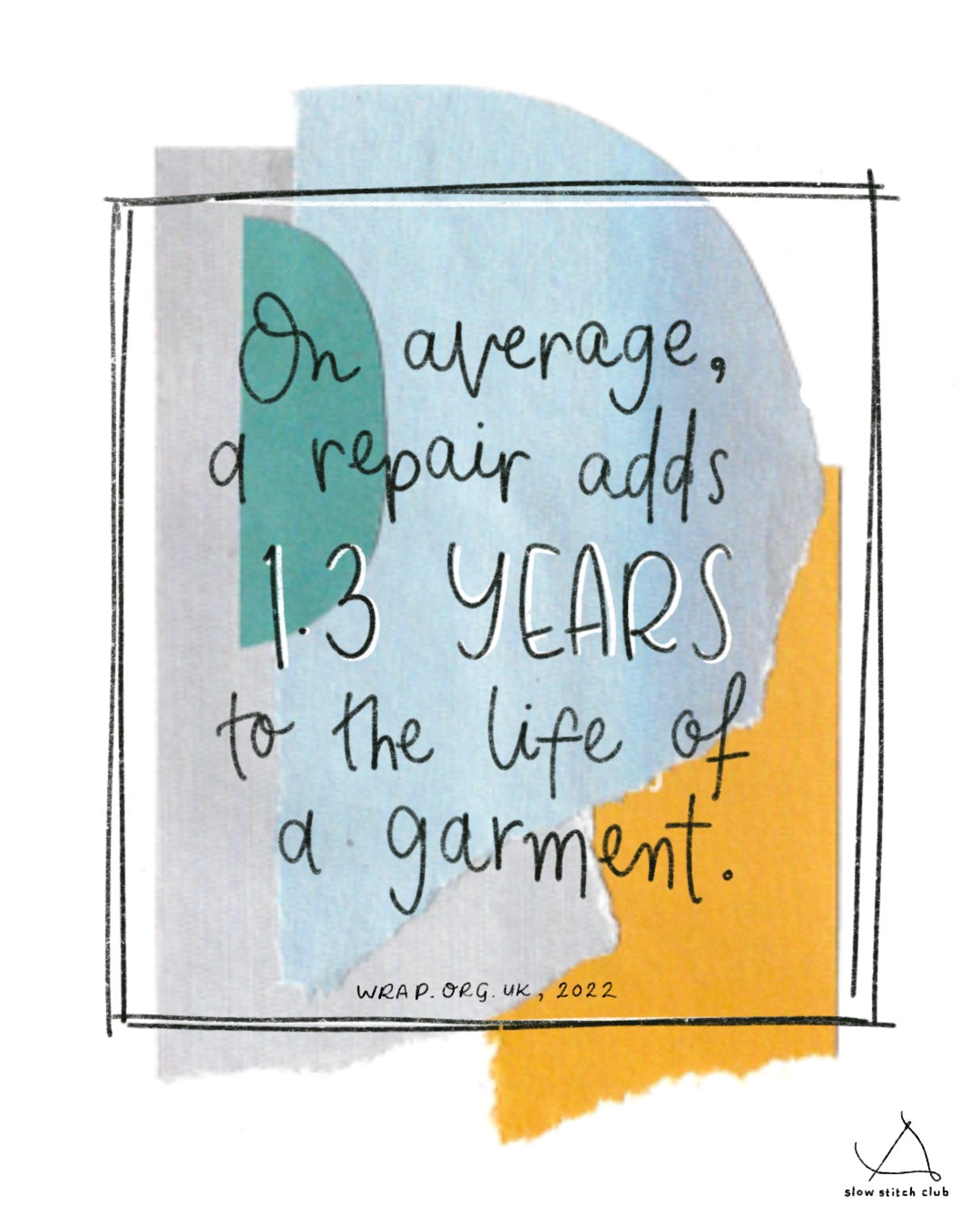This week I caught up on the latest WRAP report "clothing longevity and circular business models receptivity in the UK". I know that sounds like a mouthful, but I've always found the way that these reports are written to be much more accessible than some others. I cited one of their findings as an infographic a few years ago from a 2015 report and it's been super interesting to me to read some more recent statistics.

The main statistic that stood out for me was this:
"There is a strong association between longevity and repair – with the results suggesting that a repair adds 1.3 years to the life of a garment, on average."
Initially I was surprised by this number and thought it would be higher - as I know lots of others in the mending community did too. But then I thought about the fact that this is an average statistic and also based on one repair. And I think for the most part, if you choose to repair an item once, then chances are that you will keep repairing it. So for example I have a pair of jeans that I have fixed half a dozen times (including inserting a new zipper amongst other visible repairs!) and I think that those 1.3 years added could potentially be applied to each and every repair.
It's given me such a boost to know that what I'm teaching with visible mending can help, and I'm really excited to see how all of this will continue to grow and hopefully become much more mainstream going forward. I definitely want to spend more time thinking about how I can encourage those who are struggling to make that connection between caring for their clothes and repairing them themselves to give visible mending a try. Overall though, it's been a real reminder that mending matters, and repair can bring such joy!
A few other standout highlights for me:
• Almost three in five UK citizens (59%) say they go to a lot of effort to maintain their clothes, compared to 41% who do not. A similar proportion (57%) say that they look for ways to repair damaged items.
• Where direct comparisons are possible with the 2013 research, the results indicate that predicted longevity of clothing items has increased. This is true, for example, of jeans (estimated to be 3.1 years in 2013 and 4.1 years in 2021), dresses (3.8 vs. 4.6 years) and Tshirts/polo shirts/jersey tops (3.3 vs. 4.0 years).
• Items purchased second hand/vintage have a higher estimated longevity than items purchased new (5.4 years compared to 4.0 years).
It's great to be finally be reading about the impact that not just clothing repair and caring for our clothes for as long as possible can have, but also the importance of buying second hand and the future of CBM's within the clothing industry and how things could really change in the future.
You can read the whole report here.

